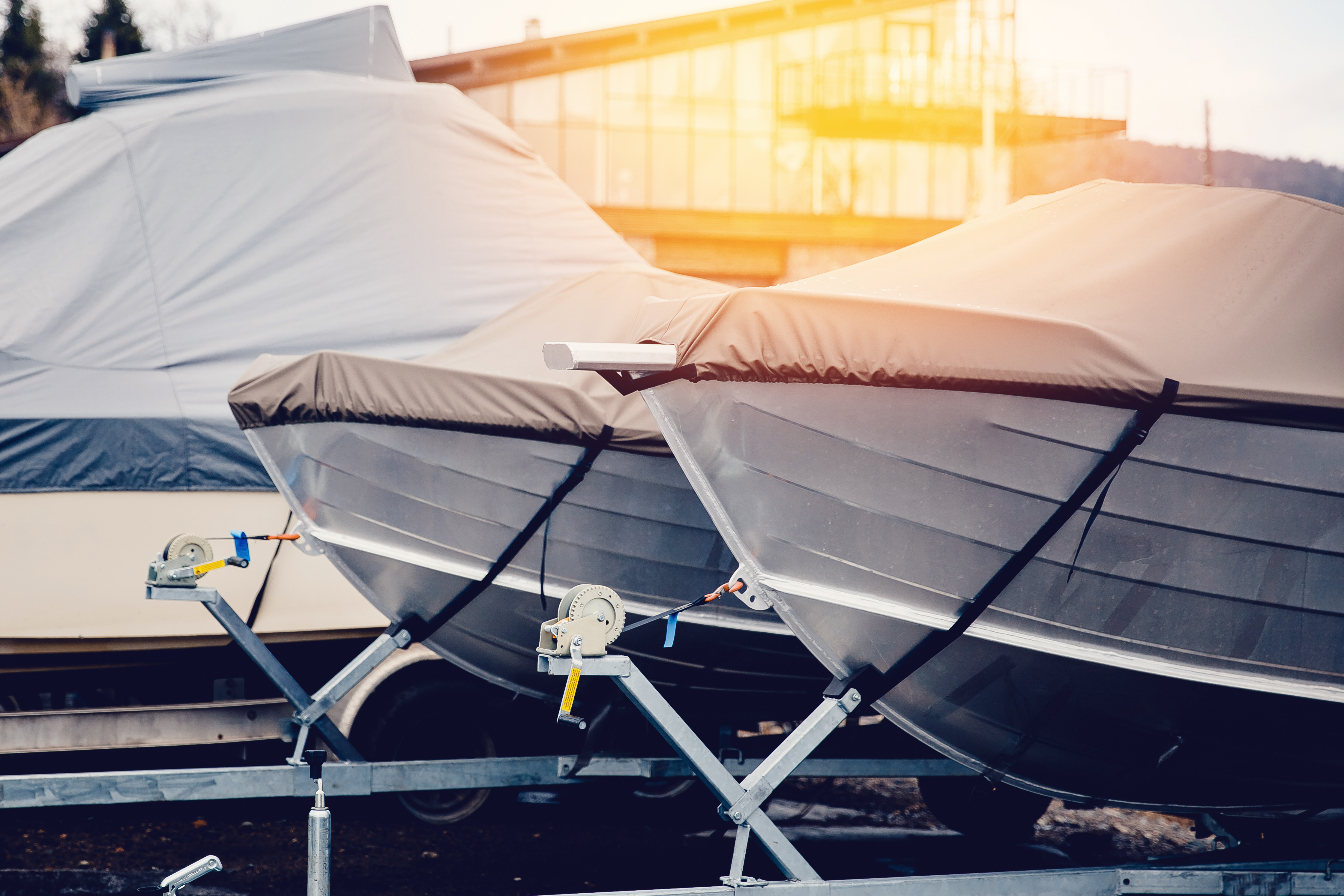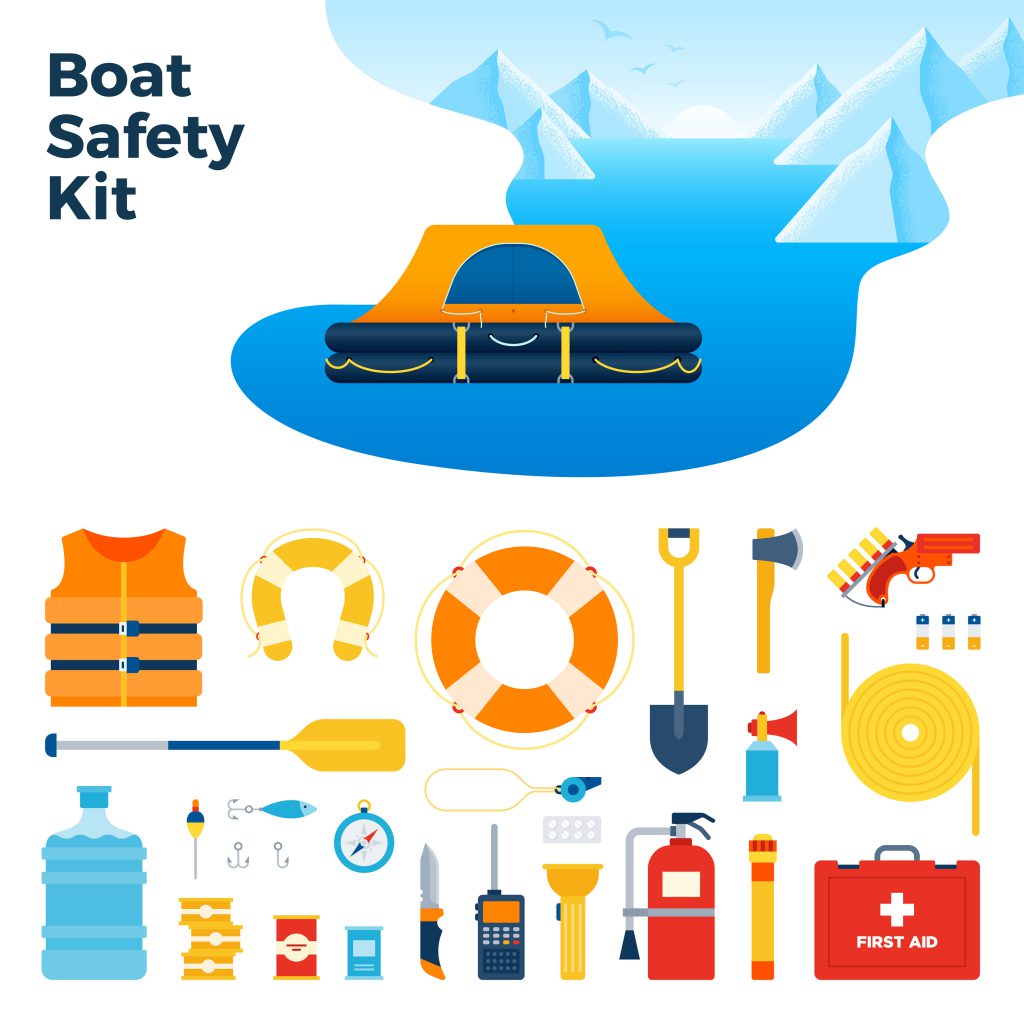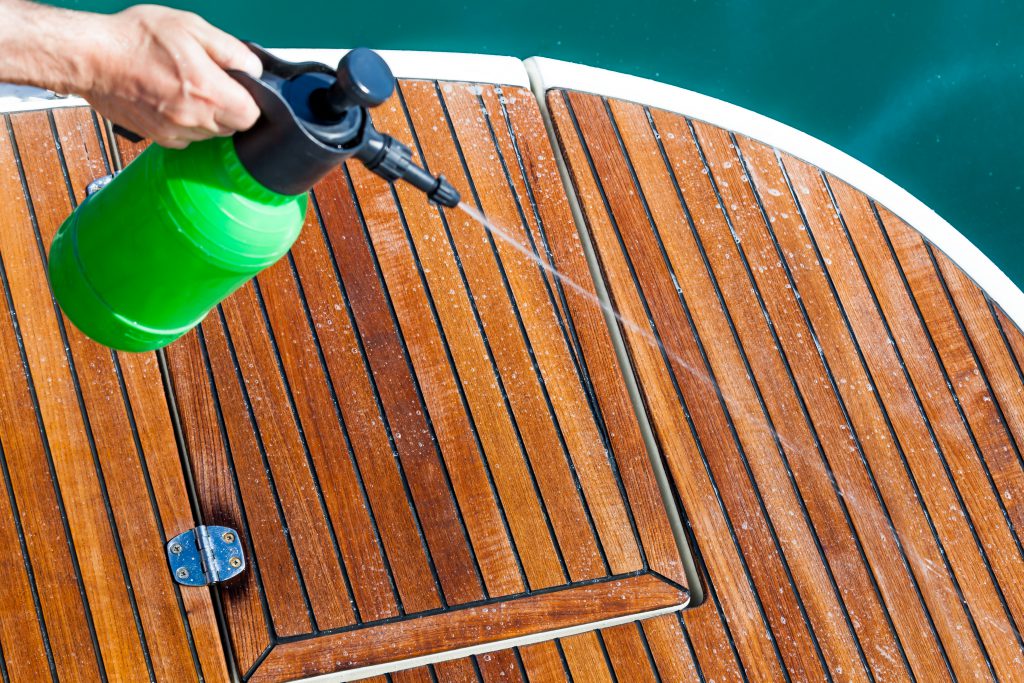Yes! It’s Boat Pre-Season Prep Time!
March 11th, 2022 by team

by B.J. Porter (Contributing Editor)
It’s March, and we’re almost there! We’ve endured frost, snow, slush and freezing temperatures, and warm weather is hinting like the faint red of new buds in the trees. It’s getting warm enough to work under the winter cover without dressing like you’re running the Iditarod, and you may even get a few nice days.
Since we’re within a few weeks of getting ready for summer, let’s look at what you may need for this boating season.
Safety First

It’s not as fun, but we should do the “needs” before we do the wants. So let’s get that out of the way with a few tasks you can do with the cover on or take care of at home.
Flares and Signals
Check them now. Yes, they expire. And no, your memory is probably off about just how long ago you bought a new set. All boats require some sort of signaling devices for an emergency, and depending on the size and where you plan to cruise, you may need to lay out a little money to make sure everything is fresh and compliant.
It’s not just about staying legal if the Coast Guard stops you. Old flares may not light when you need them, and a good distress signal can be a literal matter of life or death. So check the dates and make sure you’re good to get through the season with what’s on board.
Floatation
Inflatable PFDs also have expiration dates. It’s the trigger mechanisms that expire first, though many units now have a single hydrostatic release/CO2 cartridge combination as a replacement. Check all the dates and replace as needed.
Also, have a look at your throwables and regular flotation. Check for chafes straps and lines, worn or faded cloth, and not or mice have chewed up the padding over the winter. Replace anything which looks worn or damaged. If it looks weak, there’s a good chance it is.
Downloads and Updates
Check your electronic charts for new releases and updates. Up-to-date charts are an important safety tool, and if there are any notices to mariners out there, you want them incorporated into your navigation. Since few use paper anymore, and even less mark up their charts with the Notices to Mariners when they come out, you’ll want to see if your chart provider has done it for you.
It’s also not bad time to make sure all your firmware is up to date on any of the hardware on board. A surprising number of devices now have updatable firmware, and you’ll want any bug fixes and new features. This is especially important in devices which connect to other services, like satellite phones.
First Aid Kit
Remember last year when a kid stepped on a clam shell and bled all over the place and you used half the gauze and Band-Aids and all the Neosporin on board before he settled down? No? Check your stocks – left over the winter, things in your kit you didn’t use up can expire or go off. A well stocked basic first aid kit for scrapes, cuts, bruises, and burns is a must. So open it up and look, and replace whatever looks dodgy or depleted.
Plan Your Cleanup

If you haven’t been to the boat all winter, now is the time to make sure that winter cover held. And even if you’ve been diligently checking on the boat every week (and who isn’t, right?), the next warm weekend is a good time to get under there and have a good look around, anyway.
Unfortunately, we’re not looking at something as obvious as a cover failure. If the snow and ice collapses your cover, it doesn’t take a lot of work to find. And the ice and snow will usually melt and run off. Big winter messes are from moisture and condensation inside the boat.
A cover needs ventilation to work properly, and a cover with no air circulation traps humidity and moisture in your boat. And dampness leads to mildew, and mildew leads to S-U-F-F-E-R-I-N-G. And ruined fabric, messes, and unpleasant smells.
So open the boat up and get some air through there, and open every closed cabinet and look under every cushion. If you winterized well, you shouldn’t find problems. But if you find dampness, mildew or mold, get whatever it is off the boat and in the sun to dry out before it’s ruined.
If you spot any mildew on the ceiling and walls, your work is cut out for you since you want to nip all that in the bud. It’s hard to get rid of once you get it unless you use some aggressive mildew killers.
Check out Your Fun Gear

It’s not all about safety, after all, we’re out there boating for fun. So most of us carry toys and fun gear on board for some rest and recreation when we get where we’re going.
If you were organized and industrious in the fall, you stripped most of this gear off the boat and stored it in your basement, garage, or other protected place. If it’s on the boat, you’ll want to go over it in the mildew and mold check, and take it out and make sure it’s still clean and dry.
Just like safety gear, spending a few minutes checking your play equipment out ahead of time will make sure your gear is ready when you need it. Do you really want to be looking for leaks in that ten-foot unicorn float when you’ve got four people with a cooler of cold beers waiting to sit on it?
So check your tow lines for chafe and wear, check your inflatable toys for leaks, check your snorkeling gear to make sure nothing has dried out and cracked.
Having fun is why we do this, so take the time now to maximize your fun for next year when it’s not peak boating weather.
- Posted in Blog, Boat Care, Boating Tips, Cruising, Fishing, iNavX, iNavX: How To, Navigation, Reviews, Sailing, Sailing Tips
- No Comments


Leave a Reply